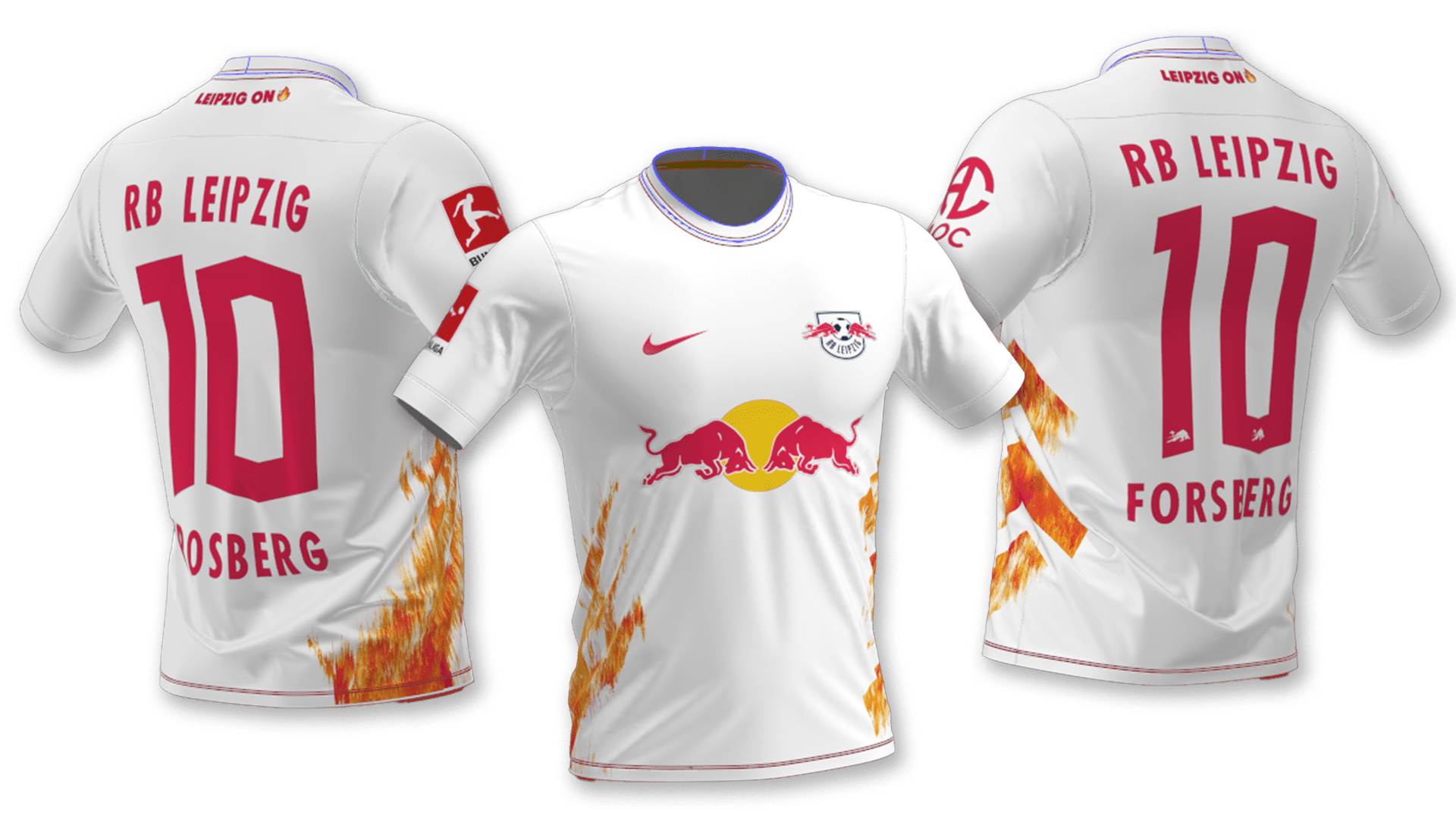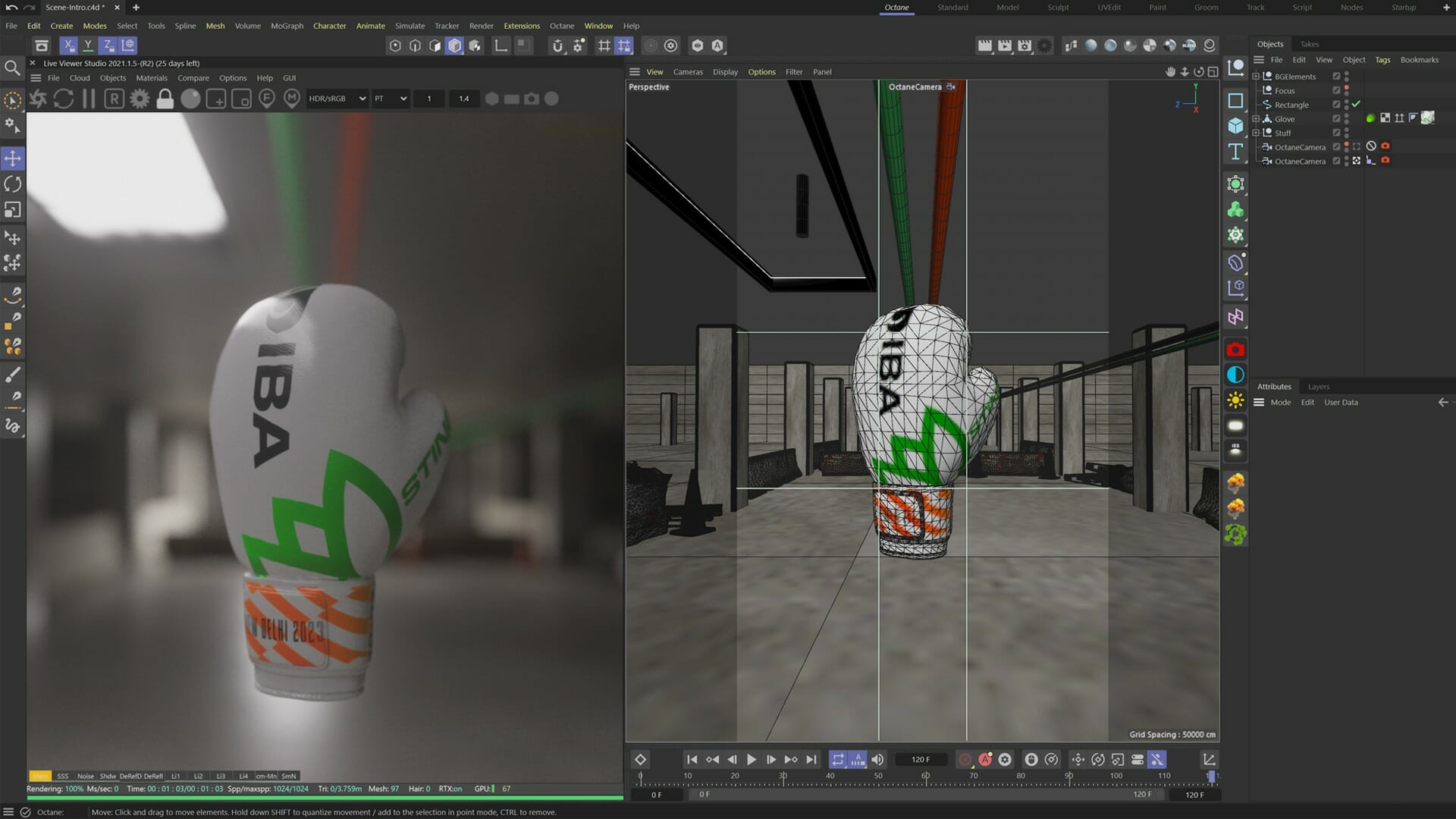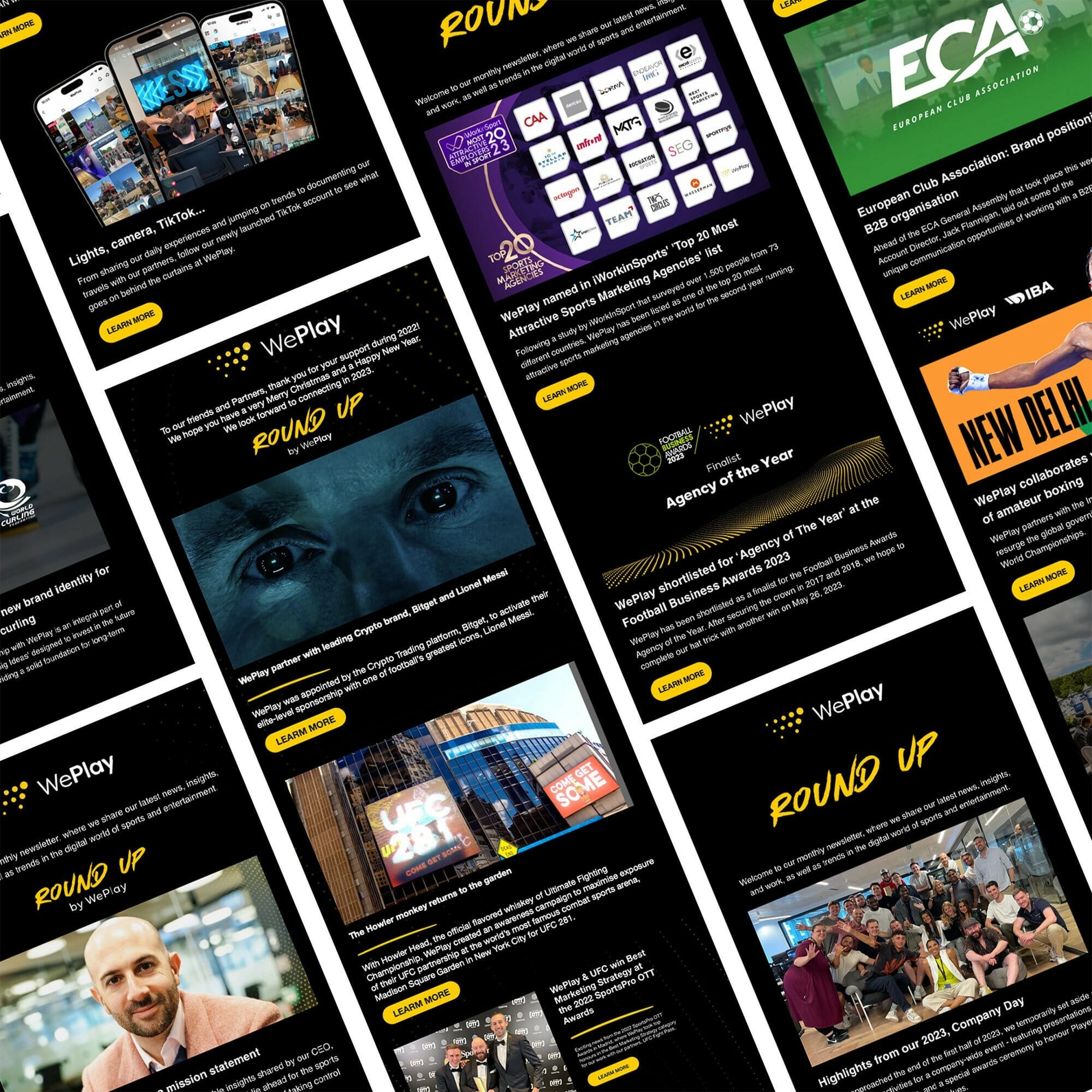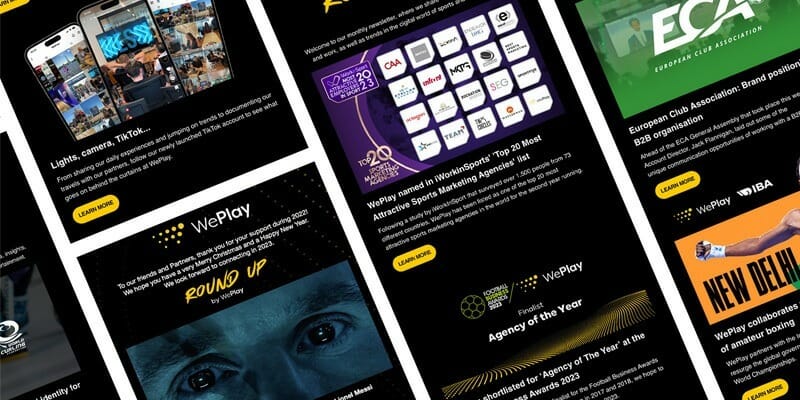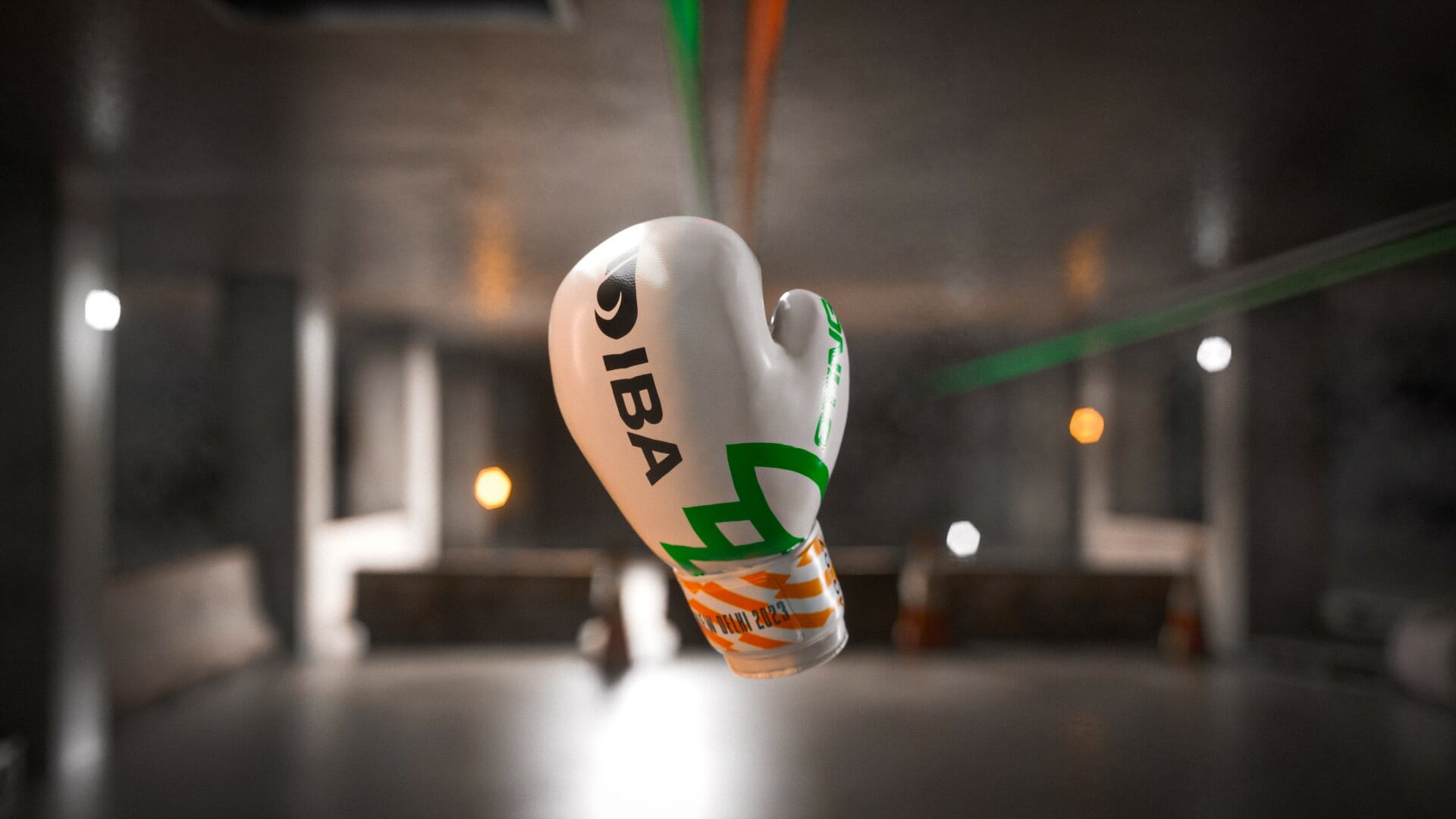
Concept to creation: making an impact through motion design
As motion designers, we create objects that do not physically exist. But our work has appeared on billboards outside one of the world’s most famous sports arenas.
Our role in the content marketing process is unique. Our team combines motion design, video production, and 3D rendering to produce highly creative content that drives commercial outcomes. While we may not be selling tickets or merchandise directly, our work is crucial in building engagement and producing assets that have the potential to be viewed and engaged with over a million times.
Like any artist or creator, the ultimate goal is to design work that will leave a lasting impression and captivate audiences. There’s nothing quite like the rush of delivering impactful content that resonates with viewers and creates meaningful connection between audiences and the brand. At WePlay, we are always taking steps to get more of those designs to the right people in the right places.
Last year, during our campaign for the challenger whiskey brand Howler Head, our branded animations were displayed outside Madison Square Garden at UFC 281. That was a ‘pinch me’ moment: something we produced in our studio was in front of all these people in New York City. It is one of those things I wish I got to see in person but the effect it has for our partners can be just as powerful.
The role of motion design
Motion design is a field with endless possibilities and constantly evolving solutions. However, it’s important to remember that our content must serve a purpose for our partners and address their specific needs.
This can include increasing engagement on social media, driving more fans to an owned platform or sell more subscriptions to an OTT channel. To tackle these challenges, we must develop creative solutions that align with our strategy on organic and paid media, effectively reaching our target audience.
That can sometimes be very analytical. We might base our approach on data that shows video works better than static imagery in a given format. We will look at benchmarks and assess the options chosen by competitors. And we then work out how best to utilise all our tools to get the best outcome.
But to truly succeed as creators we must not only produce great work but also take our partners on a journey. If we can make our partner buy into our concepts and understand what we are trying to accomplish, then we are ready to get into the creative process.
The creative process
The duration of the next steps depends on the cost and urgency of the project. The timelines are kept in mind while calculating the end goal – be it engagement, sales, subscriptions, or ad conversions.
And you also need to think about how the audience will receive that piece of creative. It needs to be as enticing and attractive as possible, without overwhelming them. Finding a balance is crucial and requires expertise in determining what works best.
A typical pipeline for a motion design asset will probably be a couple of days. That might include a day to research and flesh out the idea. Then comes the storyboarding phase, before we produce the first version in good time for review.
Following that are the amends, approvals and, hopefully, the green light from our partners. In the space of a week, we can work up a whole suite of motion design.
The workflow
Even by the standards of content and creative professionals, motion designers are active across a whole range of production tools.
Adobe After Effects is a standard. When it comes to video editing, you might switch to Premiere Pro. We’ll use DaVinci Resolve for some tasks and then Cinema 4D for building objects in 3D.
In reality, you often move between all for them for any one asset. You could send the link of your work in one programme to a second and continue developing it there. They all feed into each other – you could spend a whole day in four different programmes and not feel like you’re switching between them at all. I imagine it like a marble that keeps rolling from one run to the next.
The change in capabilities is amazing. Some of us have been using these sorts of programmes for over ten years and back then, the software and especially the hardware were limited by comparison. But now, the technology is getting so good.
The role of AI
It almost feels like in the past, the programme was a hindrance to your creativity, while today the technical potential is so expansive that your creativity is the limitation. Whatever you build is as crazy as you can make it.
Everything has become faster and more intuitive.
There’s been a lot of talk about AI solutions recently – we’ve been using AI for the past three years and it’s been very effective for our workflows. It removes a lot of manual tasks around things like image cutouts and it also unlocks creativity.
Instead of taking hours searching for inspiration or enduring a tedious storyboard process, AI software like Midjourney, Stable Diffusion and DALL-E means we can now quickly generate ideas and images at speed with just a few prompts.
Designing 3D objects
There are a variety of things you can be doing in motion design but building an object from scratch can be one of the most rewarding.
Recently, we designed a 3D version of a boxing glove for a giveaway after the Women’s World Championships for the International Boxing Assocaiton (IBA) and that meant developing a bespoke pipeline. To start with, you work out how to create the object itself.
We used a programme called Marvellous Designer to generate the right kind of leather simulation that would mimic the real-life boxing glove. Once this is done, you are ready to build out the 3D model, taking it through another programme called Cinema 4D.
Then you have another tool, Octane Render, whose whole job is to take what you’ve put on that canvas – all that information generated in terms of textures and materials – and turn that into a convincing image. Applying real-world lighting and physics is very, very technical and not everything will come out of it looking good.
You need to really understand the texturing and the material-based system that the object works on. You consider its roughness, its shininess, whether it is bumpy, how it might feel between your fingers. You have to appreciate whether there is much of a surface coating – a waxy layer, for example. And you enter that technical data. We can literally spend the whole day tweaking values in the node editor to get the right look.
Trial and error is key to make an object look tactile and realistic before moving it into Adobe After Effects. Here, you can have some fun after all the hard work playing around with sliders, timing and animation to perfect it before sharing it with the world.
Getting inspired
One of the best things about being motion designers is that there are so many places to look for ideas.
We have made connections with many other designers around the world and are always looking to that network to see what is possible. There’s no better inspiration than friends and colleagues who you know and trust, not least when they can help you understand and develop new creative processes.
We look to social media as well to see what people are trying and I also love to find out what is happening at the cutting edge. You could go to the cinema just to study the visual effects. The most exciting work to appear recently is from Weta Digital – the team behind Avatar: The Way of Water.
Ironically, they have learned how to make water wet.
They spent 15 years studying water simulations and what they have achieved – especially in capturing live performers underwater – is just crazy. When you consider the whole exercise, you get why it can take so long for them to come up with a few seconds of footage – and you want to apply that level of dedication to your own work.
But sometimes you need to separate yourself from the digital thing and get back to nature for new ideas to strike. You could get inspired from your lunchtime walk in the park. It’s a cliché, but sometimes we get our best ideas in the shower.
Of course, they can sometimes occur to you in completely the wrong environment, like when you have to root around for your phone in your pocket to get the right note down on a crowded commute.
But it’s not like you need to sit in a sensory deprivation tank to figure something out. There are just moments where you have to take yourself away from what you’re doing to really see it.
If you’d like to explore more examples of our work, please visit this page.
